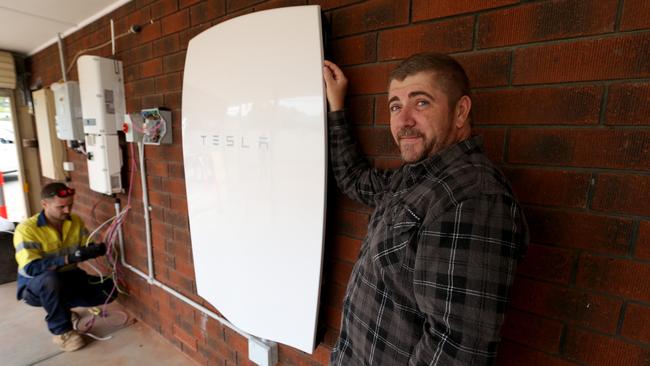Today in South Australia: High hopes for $3m virtual power plant
As the final battery is installed, SA Power Network hopes their $3m project will ease pressure on the state’s vulnerable network.

The privately owned distributor of electricity in South Australia is hoping a $3 million virtual power plant in Adelaide’s northern suburbs, involving homes installing solar panels and lithium ion batteries, will ease pressure on the state’s vulnerable network.
SA Power Network’s pioneering project, which is the largest virtual power network in Australia, today installed its 100th and final battery on a house in the trial suburb of Salisbury Plain, with monitoring on the project underway since July.
SAPN spokesman Paul Roberts said Salisbury Plain was chosen because the suburb needed capacity and other network upgrades — worth at least $3m — due to suburban infill and land owners replacing houses with multiple units, placing more demand on the grid.
The system would provide grid stability by returning stored power from boogie board-sized batteries to the network during peak times, such as heatwaves, and allowed residents to generate their own electricity. Mr Roberts said SAPN would not have to increase network capacity if the batteries returned power to the grid.
“Our option in the old days would have been to expand the network but we’ve now got control technology where we can get into the battery and take some power out when we need it, in times of peak demand,” Mr Roberts said.
“Quite clearly there’s going to be a shift in the next 10 years where more and more people invest in it and it’s our role to provide a stable network that meets those needs.”
The Tesla and Samsung battery systems cost residents about $3700 each, or less if leased for three years, and have been heavily subsidised from their $10,000 price tag.
Mr Roberts said the average annual South Australian power bill was $1800, which meant it could take less than three years to recoup costs.
Single dad Steve Hendy has had solar panels for three years and a battery installed yesterday. When the panels were first installed the feed-in tariff was 24 cents per kilowatt hour, and his power bills stopped.
The tariff has since been reduced to 8c per kilowatt hour, which left him with a $500 power bill in winter and $190 last month, for the electricity that solar could not produce.
“With this system hopefully I shouldn’t have any power bills whatsoever,” Mr Hendy said.
“As a shiftworker I use most of my power at night and I’m not here in the peak period, hopefully there’ll be enough power stored.”
Retailer AGL Energy yesterday announced it had sold out of its first release of 150 batteries in the state, and if all were connected, it said the network would create the world’s largest virtual power plant across several suburbs. Only nine have been connected so far.
The AGL project received Australian Renewable Energy Agency funding.
Work has also started on a six megawatt solar energy project in Whyalla, which will install 7000 solar panels by April. The project will expand to produce 25MW over several years.


To join the conversation, please log in. Don't have an account? Register
Join the conversation, you are commenting as Logout